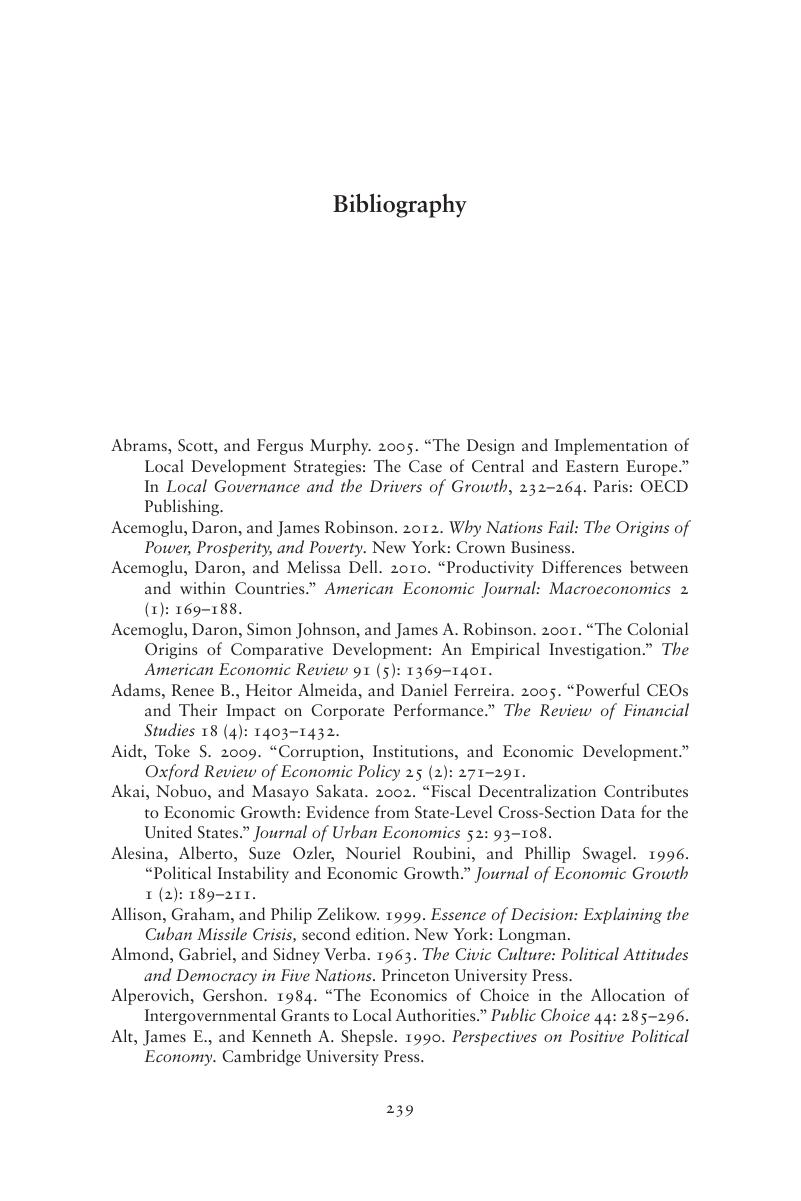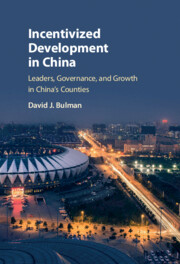Book contents
- Incentivized Development in China
- Incentivized Development in China
- Copyright page
- Contents
- Tables
- Figures
- Book part
- 1 Introduction
- 2 Understanding China’s County-Level Economic Growth
- 3 Governance for Growth: Investment Attraction and Institutional Development
- 4 First in Command: Leadership Roles for County Development
- 5 Paths to Promotion: The Inconsistent Importance of Economic Performance
- 6 Ignoring Growth: The Institutional and Economic Costs of Maintaining Stability
- 7 Conclusion: A New Political Economy of Uneven Regional Development
- Book part
- Bibliography
- Index
- References
Bibliography
Published online by Cambridge University Press: 27 October 2016
- Incentivized Development in China
- Incentivized Development in China
- Copyright page
- Contents
- Tables
- Figures
- Book part
- 1 Introduction
- 2 Understanding China’s County-Level Economic Growth
- 3 Governance for Growth: Investment Attraction and Institutional Development
- 4 First in Command: Leadership Roles for County Development
- 5 Paths to Promotion: The Inconsistent Importance of Economic Performance
- 6 Ignoring Growth: The Institutional and Economic Costs of Maintaining Stability
- 7 Conclusion: A New Political Economy of Uneven Regional Development
- Book part
- Bibliography
- Index
- References
Summary

- Type
- Chapter
- Information
- Incentivized Development in ChinaLeaders, Governance, and Growth in China's Counties, pp. 239 - 266Publisher: Cambridge University PressPrint publication year: 2016



